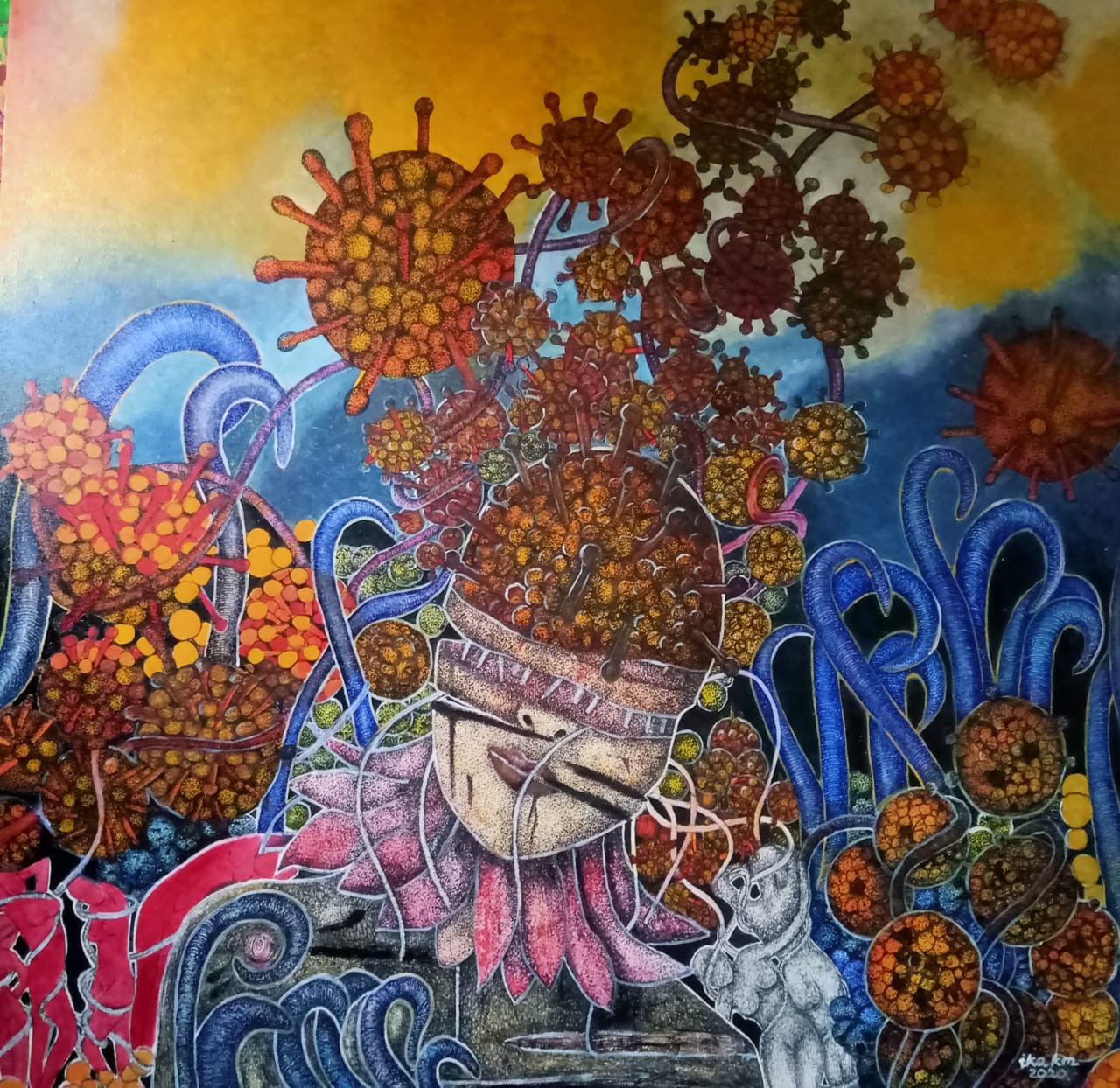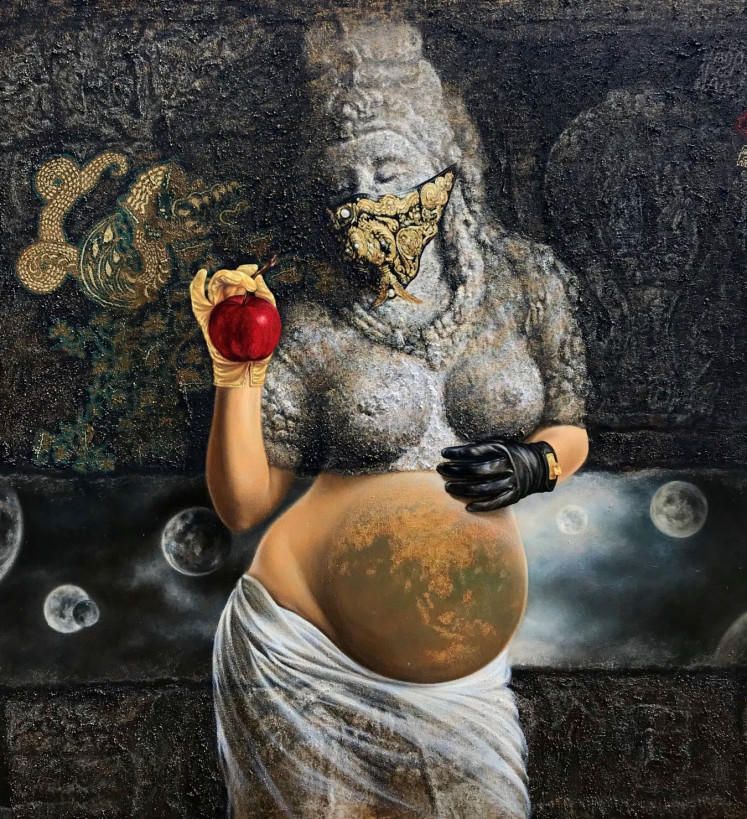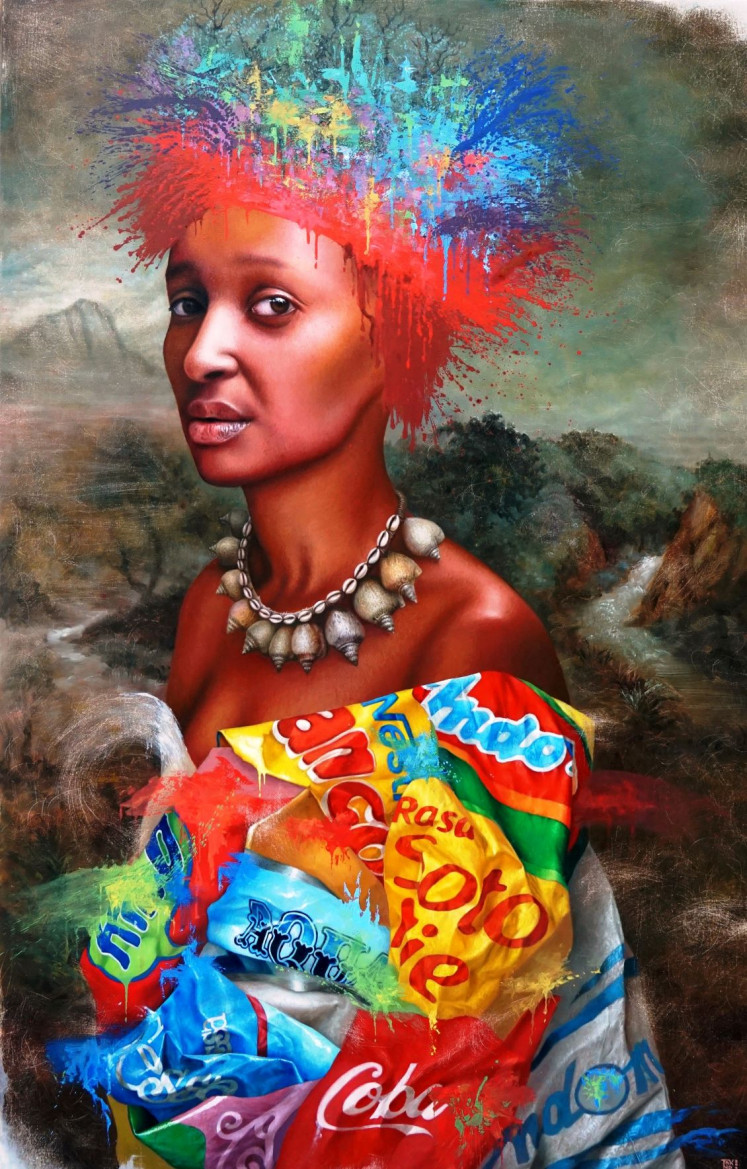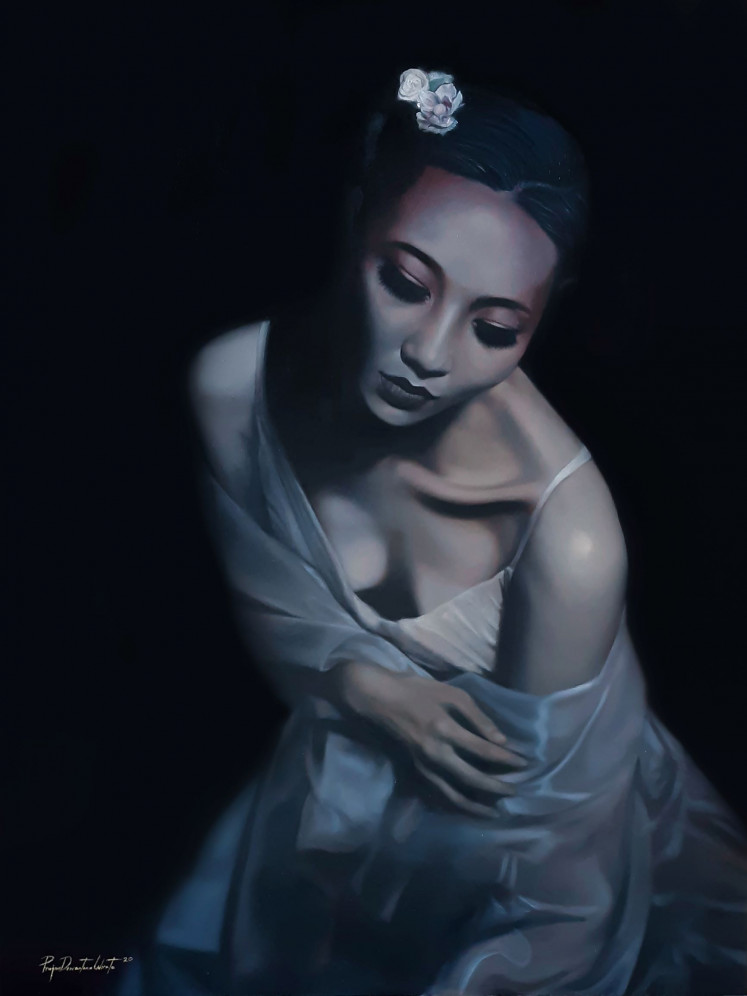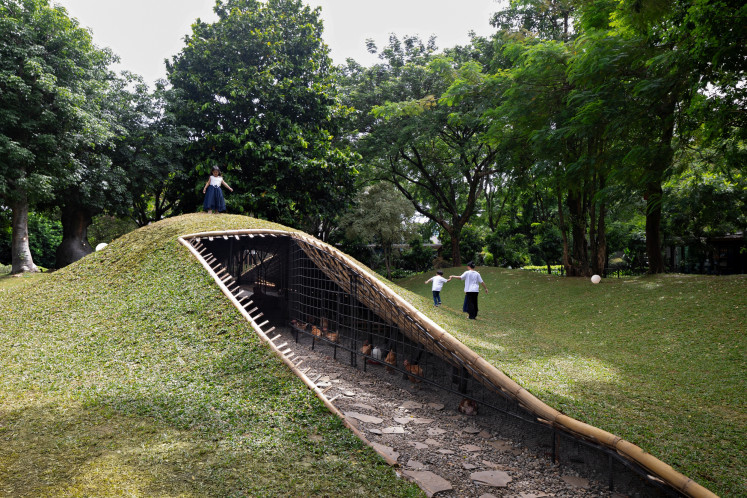Popular Reads
Top Results
Can't find what you're looking for?
View all search resultsPopular Reads
Top Results
Can't find what you're looking for?
View all search resultsExhibition centers on women’s universe to heal the world
An exhibition opening during the pandemic may be a cause for surprise given the less favorable situation, but it also denotes the enduring spirit of art’s creative energy.
Change text size
Gift Premium Articles
to Anyone
A
new exhibition called “Semesta Perempuan” (Women’s Universe) held at Museum Basoeki Abdullah in Jakarta is a beacon of resilience energizing the slackening mood that had been sliding over the art world.
At the same time, the museum’s director, Maeva Salmah, has critically transformed the general perception of Basoeki Abdullah, one of Indonesian masters whose name is the museum’s namesake, as a painter who painted women “more beautiful than in reality” into a more meaningful connotation.
Curated by Citra Smara Dewi, the exhibition, which runs from Sept. 25 to Oct. 25, brings together artworks by both female and male artists who were born in various corners of Indonesia but received their art education outside their places of birth.
As each work was created based on the artist’s specific personal background and experience; they all hail the virtues and importance of women and are marked by a great painterly quality.
Perhaps this is what Indonesian sculptor and human rights warrior Dolorosa Sinaga meant when she gave a gender perspective during The Jakarta Post’s organized webinar on Mahatma Gandhi and Satyagraha as a way to world peace.
Dolorosa referred to the enduring culture of patriarchy, which in this light must be opposed and we all needed to work together.
Among the distinct differences in each of the artists’ experiences, backgrounds, visions and visual presentations, some excel in a futuristic vision, giving an in-depth basis into cultural and traditional and environmental roots while blending them into a comprehensive contemporary culture.
Twist: 'Ibu Semesta' (Mother of Universe), an acrylic, oil and java sand on canvas (2020) by Syis Paindow, features Eve in the form of a Javanese angel often found on temple reliefs. (Courtesy of Museum Basoeki Abdullah/-)One such painting is Ibu Semesta (Mother of the Universe), created with acrylic oil and sand on canvas by Syis Paindon, born in Majene, West Sulawesi, whose painting describes the universe as he sees it growing into the future.
Featuring Eve in the form of a Javanese angel, such as figures often found on the reliefs of Borobudur or Prambanan temples, Syis imagines Eve in a combination of the Javanese and contemporary culture.
While first appearing as if appropriated from a temple relief, a closer look reveals interesting details linked to our present life, such as a gold embellished mask, black “Soya Hermès gloves” holding an apple, which with the proverbial snake in the background had caused Adam and Eve to be chased out of Paradise.
Meanwhile, the woman’s pregnant belly features some continent that promises better tidings in hopes of giving birth to exceptional children, the golden generation of the human race.
This all is painted against a background of batik from the palace of Surakarta, Central Java. It also shows reliefs from Candi Sukuh temple, metaphorical of the womb and the symbolical tokens of Lingga Yoni.
The clash: 'Feast of Taste', oil and acrylic on canvas, by Ignasius Dicky Takndare is part of his 'Death Dress' series. (Courtesy of Museum Basoeki Abdullah/-)Interestingly, Ignasius Dicky Takndare, who was born in Papua, highlights Papuan women and culture to elaborate on the environment, the land and the clash of the new with the old.
Featuring a Papuan woman, the work is titled Feast of Taste of the series Death Dress showing a beautiful Papuan woman with her kribo (curly) hair in colored abstraction appearing like a crown, while her dress is embellished with brands from urban culture like Coca Cola and instant noodles Indomie and Sotomie.
“My Death Dress series is a reflection on how we have to compromise with all the changes happening around us,” Ignasius says.
Closer to women’s silent situation is the painting Soliloquy by Tabanan-Bali born Citra Sasmita, an upcoming artist who features a female figure with a white cloth covering her head, while thorn cacti embellish red blooms decorating some parts of the body.
“It denotes my looking inwardly, reviewing my thorny life and talking to myself,” she explains.
The Real Home by Agustan, who was born in a village near Bone in South Sulawesi, reminds us of a realistic tent with surreal underpinnings.
Agustan loves how the Bugis women in the village take their place in life. “She is the spill of life,” he says.
Bruised: 'Ghost of the Past', oil on canvas (2020) by Prajna Deviandra Wirata, almost approaches the way master Basoeki Abdullah painted his women. (Courtesy of Museum Basoeki Abdullah/-)But Prajna Deviandra Wirata, who was born in Jakarta and lives between Bali and Bandung, expresses her concern over the still-ongoing violence against women.
Featuring a beautiful woman in Ghost of the Past, the way that almost approaches how the master Basoeki Abdullah painted his women, Prajna’s refined bluish tones coloring the woman’s face and are were not meant to beautify, rather they denote traces of past bruises of a violent nature.
Ika Kurnia Mulyati from Banten refers to the current pandemic with a painting titled Queen of Corona, in which she features a sort of warrior. But she doubts whether the virus can be conquered, so we have to live with it in compromise.
Other artists featured in the exhibition include Afriani (Selayo West Sumatra), Erica Hestu Wahyuni (Yogyakarta), Guntur Wibowo Temanggung (Central Java), Tubagus Patoni (Bangka), Vicky Yordan (Depok, West Java), Mahdi Abdullah (Aceh) and Jakarta artists Indyra, Resa Prastica Hasibuan and Pongko Hari Purnomo. (ste)
- Further information at museumbasoekiabdullah.or.id

